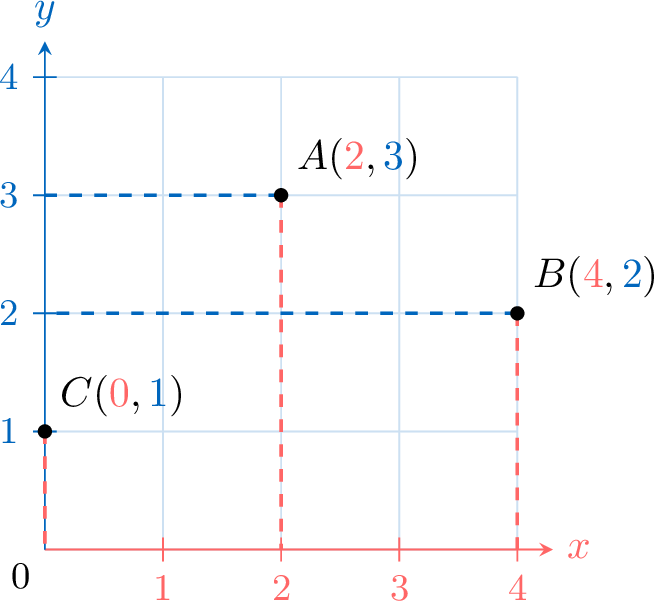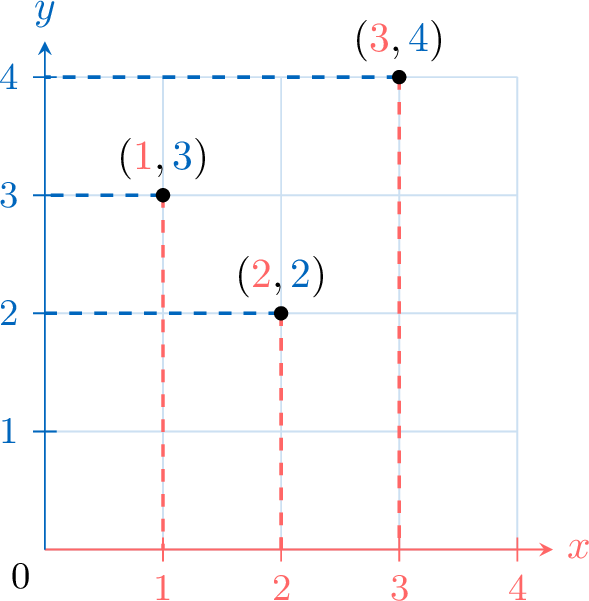Coordinate Geometry
Coordinate Plane
Definition Coordinate Plane
A coordinate plane is a grid formed by two number lines that intersect at zero, called the origin. The horizontal line, called the x-axis, extends left and right. The vertical line, called the y-axis, extends up and down.
The coordinates of a point are a pair of numbers, like \(A(2, 3)\). The first number (the x-coordinate) tells you how far to move right from the origin, and the second number (the y-coordinate) tells you how far to move up.
The coordinates of a point are a pair of numbers, like \(A(2, 3)\). The first number (the x-coordinate) tells you how far to move right from the origin, and the second number (the y-coordinate) tells you how far to move up.

Example
Plot these points on a coordinate plane: \( A(2,3), B(4,2), \text{ and } C(0,1) \).
- For \( A(2,3) \): Move 2 units right, then 3 units up.
- For \( B(4,2) \): Move 4 units right, then 2 units up.
- For \( C(0,1) \): Stay at 0 units right, move 1 unit up.

Table of Points
Definition Table of Points
A table of points lists the coordinates of points in a coordinate plane. In such a table:
- The first row represents the x-coordinates.
- The second row represents the y-coordinates.
Example
| \(\textcolor{colordef}{x}\) | \(\textcolor{colordef}{1}\) | \(\textcolor{colordef}{2}\) | \(\textcolor{colordef}{3}\) |
| \(\textcolor{colorprop}{y}\) | \(\textcolor{colorprop}{3}\) | \(\textcolor{colorprop}{2}\) | \(\textcolor{colorprop}{4}\) |
